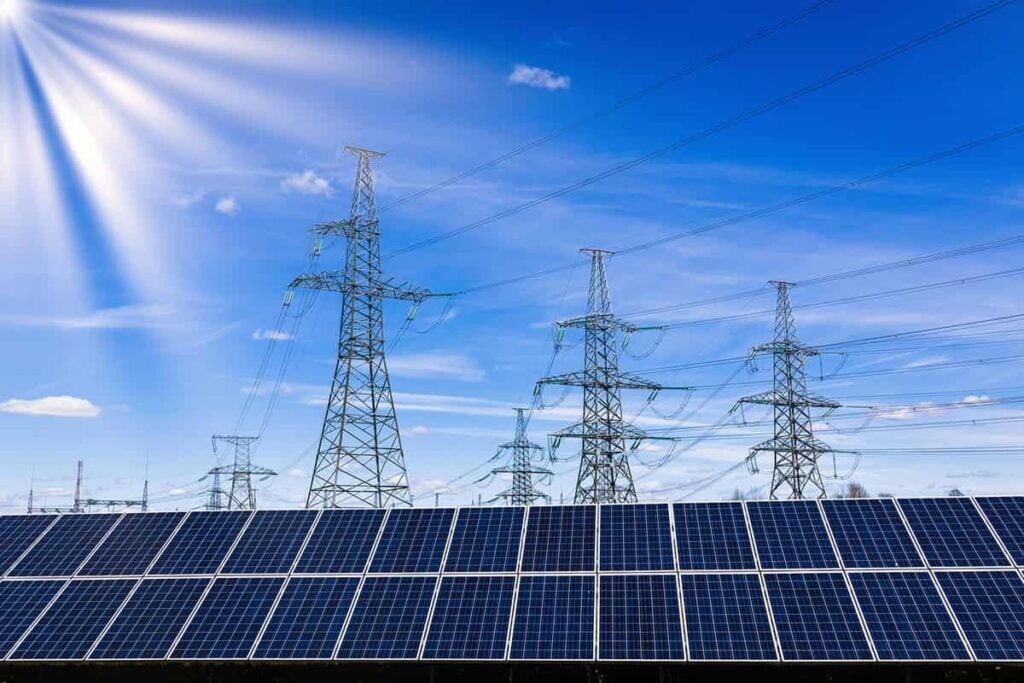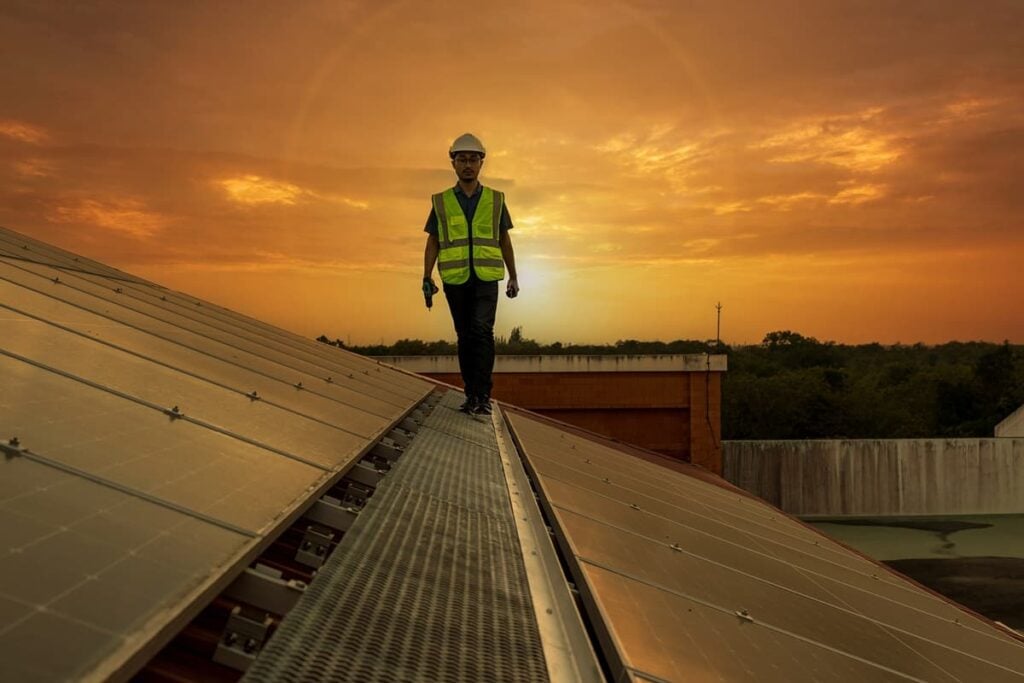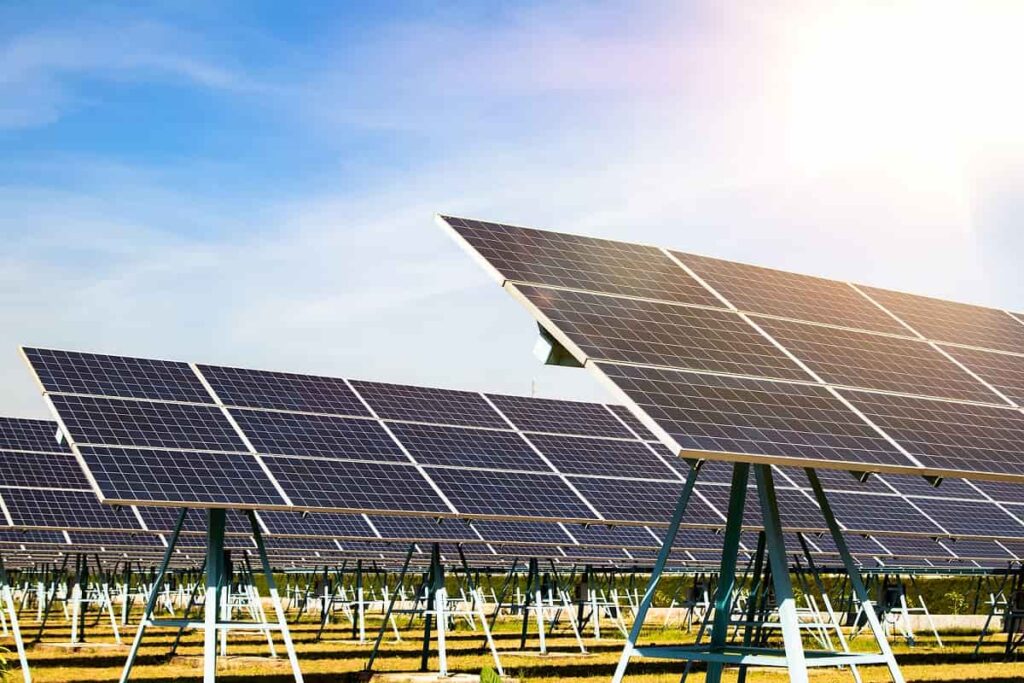Solar Power Investment Funds from Wunder Capital
Table of contents
Table of contents

Every day we wake up to light and warmth provided to us by a massive ongoing nuclear explosion which we call the sun. It’s an extremely valuable resource considering the fact that it isn’t going anywhere for millions of years – that is until it consumes earth and kills us all. (This is why NewSpace is a pretty important area for humans to be focused on.) That sunlight we all bask in contains a great deal of energy that can be harnessed to provide electricity that we can then use for productive things like mining bitcoins. Here’s a look at just how much energy could be captured by simply installing rooftop solar solutions:
That’s not even taking into account commercial installations that cover large areas and can power factories, schools, hospitals, and all of Mr. Musk’s silent and extremely fast electric vehicles. As investors, we have believed in the potential of solar for a long time and consequently have been holding the Guggenheim Solar ETF (NYSEARCA:TAN) for quite a while now. Here’s how that investment had performed over the past 5 years:

That +64% return simply sucks when you consider that just holding a broad market S&P500 ETF would have returned +87% without taking all that risk. Better yet, you could have held the world’s largest generator of solar and wind power, NextEra Energy (NYSE:NEE), and reaped a +126% return along with a whole bunch of delicious dividends. Speaking of dividends, that’s a good segue into what we’re here to talk about.
The more you age, the worse your hangovers get, and the more you start getting the feeling that this whole “working 9 to 5” thing sucks. This naturally leads you to start looking for ways to get “passive income” which is just another way of saying that “you want your money working for you”. While the large majority of our investments are in dividend growth investing stocks for that reason, we’re also keen to find other investment vehicles that provide income while giving us exposure to exciting themes like solar. That’s where Wunder Capital comes in.
About Wunder Capital
Founded in 2014, Boulder Colorado startup Wunder Capital has taken in $4.8 million to develop a platform that enables any accredited investor to build a portfolio of solar investment projects that have historically only been accessible to large institutional investors. The way it works is that Wunder Capital provides loans to various commercial entities for use in purchasing solar energy systems. The equipment being purchased acts as a form of collateral should there be a default on the loan. All of this translates into a product with the following structure:
- Invest $10,000
- Receive $80 a month for 60 months
- Receive a bullet payment of $8,693 on month 61
(NOTE: These are projected returns. The return profiles are not guaranteed)
Essentially this is like buying a stock with a 9.6% yield, holding it for 5 years, and then selling it at a -13% loss. Or it’s like buying a stock today and then 5 years later, selling it for a gain of about +35%. That noise in the background is one of our MBAs choking on their coffee because in both of these examples we’ve completely ignored the time value of money (not to mention the tax implications). In this case, we’re just trying to avoid boring you to tears. Just think of this product as being paid 7.5% a year to loan your money out to businesses that will use it to buy solar equipment. That’s a pretty decent yield actually, so what’s the downside?
Well the first and most obvious downside here is that there is no liquidity for these notes. Sure, you can invest with as little as $1,000, but you can’t just back out of the deal once you’ve made the investment. You’ll have to wait the full 60 months for your money to be returned. During that time, you’re exposed to risks that may affect your investment. While the sun isn’t going anywhere, government incentives for solar adoption could change. Right now the businesses that are taking on these loans to fund the purchase of solar equipment will realize cost savings as a result of doing so. This is the real world, and going green isn’t just about feeling better about how responsible we are as investors, but also making sure that value is being added. If the incentive structure changes such that value isn’t being added, this could lead to defaults in a worse-case scenario. That’s why diversification is so important.
A cursory look at the Wunder platform shows 4 different funds on offer, two of which are now closed to new investors. While the remaining two funds have differing structures, we can see that they’re largely sticking to smaller loans. That’s a plus when it comes to increasing diversification but it also means they’ll need to generate lots of interest to grow. That appears to be happening.
The two main things the platform needs to grow are borrowers who wish to install solar capacity and investors with money to loan. Here’s a look at the “borrowers” part of the equation:
There are a few interesting things to note here. Aside from the obvious increase in demand for loans in 2017, we can also see that they’re being quite selective about who they loan money to by only approving around 14% of applications (115 out of 831). We can also see the average loan size is relatively small at $347,000 which means they’re going to be quite diversified with lots of smaller loans as opposed to just a few big ones. Should one borrower default, the impact to the overall portfolio will be minimized. Of course in order to lend all this money they need to acquire new investors which brings us to the next part of the equation – accredited investors:
The first thing to note here is that they’ve forgotten about the Alaskans (cue outrage tweets). The second thing to note is that accredited investors don’t appear to be taking advantage of the $1,000 minimums since the average investment position sits at around $51,000. The third thing to note is that there is a great deal of interest from non-accredited investors who would be likely to invest in smaller amounts making the platform “$1,000 minimum” quite appealing. A cursory look at another firm out there called SunFunder which provides solar financing shows minimums of around $100,000 which makes them off limits to the majority of retail investors.
The investment product(s) on offer here from Wunder Capital seem quite compelling, and you don’t exactly have to bet the farm with their $1,000 minimums. We reached out to Wunder about when we can expect to see these products offered to non-accredited investors and the answer was that they’re “hoping for progress next year”. Given how poorly our solar ETF investment has performed, we may just consider allocating our green investment dollars into one of the Wunder Capital funds.
Sign up to our newsletter to get more of our great research delivered straight to your inbox!
Nanalyze Weekly includes useful insights written by our team of underpaid MBAs, research on new disruptive technology stocks flying under the radar, and summaries of our recent research. Always 100% free.

















